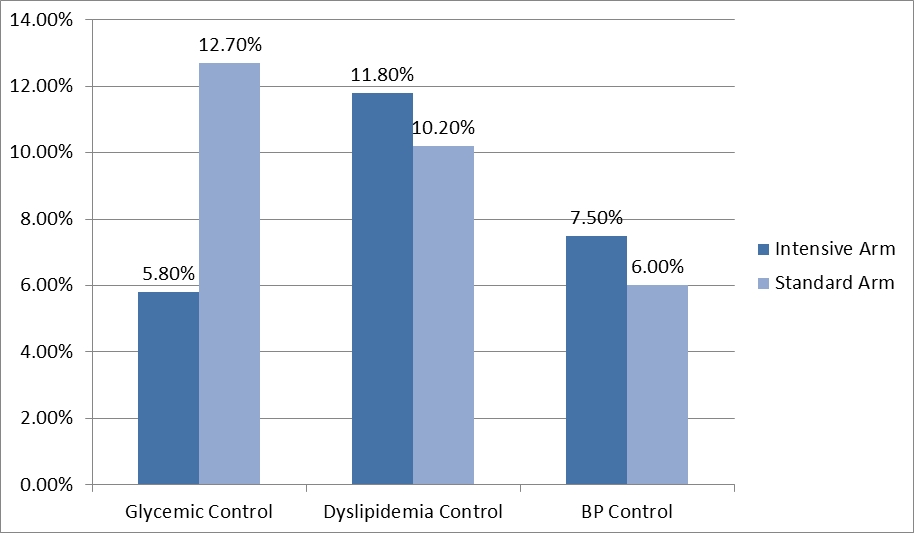ACCORDION: Eye Benefits due to Intensive Glycemic Control Persist even 4 Years after Treatment Discontinuation
Introduction
Certain landmark trials (UKPDS ad DCCT) have exhibited persistent benefits of intensive glycemic control even several years after the discontinuation of the intensive treatment strategy in type-2 diabetes mellitus (T2DM) patients.
Aim
To determine whether the beneficial effects of intensive glycemic control and fenofibrate treatment (for dyslipidemia) in terms of reduction in diabetic retinopathy (DR) progression as demonstrated in the Action to Control Cardiovascular Risk in Diabetes (ACCORD) Eye Study would persist beyond the period of clinical trial.
Patient Profile
Patients with T2DM (glycated hemoglobin [HbA1c] ≥7.5%) at high risk of cardiovascular disease (CVD)
Method
Study Design
Randomized controlled clinical trial
Treatment Strategy
Ophthalmologic Examination
- Standardized eye examinations along with fundus photography conducted four years after the ACCORD trial close out in patients who had fundus photographs at the ACCORD Eye Study baseline
- Visual acuity, measured every 2 years to assess the impact of treatment on moderate vision loss (defined as worsening, in either eye, by three or more lines on the Early Treatment Diabetic Retinopathy Study [ETDRS] visual acuity chart)
Primary Outcome
Diabetic retinopathy progression of three or more steps on the ETDRS scale at 8 years vs. baseline
Secondary Outcomes
The effect of the medical therapies on moderate visual loss (as defined in ACCORD Eye; three or more lines of vision loss compared with baseline)
Results
- The benefits of intensive glycemic control in terms of reduced progression of DR continued even after the trial close out
- Fewer patients in the intensive glycemic treatment arm vs. standard treatment arm had progressed to DR (adjusted odds ratio [aOR]; 0.42, P <0.0001) at the 8-year examination
- The rate of DR progression in fenofibrate vs. placebo group at the 8-year examination was (11.8% vs. 10.2%, aOR; 1.13, P = 0.60)
- Amongst patients receiving intensive BP management 7.5% vs. 6.0% (standard BP treatment) progressed to DR (aOR; 1.21, P = 0.59) (Figure)
- The rate of moderate vision loss at 8 years was significantly lower in patients treated intensively vs. those receiving standard treatment for glycemia (29.6% vs. 31.7%, hazard ratio [HR]; 0.98) and amongst those treated with fenofibrate vs. placebo (29.7% vs. 30.2%, HR; 0.95)
- The rate of moderate vision loss in patients treated intensively to control BP vs. standard BP control was 32.8% vs. 30.2%, adjusted HR; 1.15)
Conclusion
- Intensive glycemic control reduced the progression of DR in T2DM patients, with the benefits evident even beyond the treatment period
- Integrating fenofibrate in the dyslipidemia management strategy also reduced the progression of DR, although the benefits did not persist post-treatment. Hence, it is important to reconsider fenofibrate for reducing the progression of DR in T2DM patients at high risk of CVD
- Intensive SBP control had no harmful or beneficial effects on the study subjects
Diabetes Care 2016; DOI: 10.2337/dc16-0024











